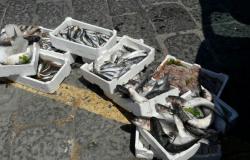4.27pm Friday 07 June 2024
Voting on 8 and 9 June, for the first time with the new electoral law. Representatives for the defeated coalition increase. The seats of the majority are increasing: whoever goes to the council is replaced at Palazzo Lascaris. And the undersecretaries also make their debut
The losing coalition could get fewer votes, in percentage terms, than five years ago and gain more seats. A far from remote hypothesis. In 2019, in fact, Sergio Chiamparino’s coalition obtained 33.3%, while Alberto Cirio’s coalition stood at 53.5%: a gap that could be even wider on 10 June, when the counting of the regional elections is expected in Piedmont, but despite this guarantee 20 councilors (out of 51) to minorities, compared to the 18 obtained five years ago. This is thanks to the new electoral law which, together with the alternate councillors, to guarantee greater stability to the majority in the chamber, has assigned two additional representatives to the parties and coalitions that will be defeated in the polls. Unless the majority reaches or exceeds 60%, in which case the opposition would have to settle for 18 councillors.
The majority bonus, in fact, allows the winning coalition to have at least 55% of the seats, or 28 if it obtains up to 45% of the valid votes; it rises to 60% of the seats, i.e. 30, if it obtains between 45 and 59 percent of the votes, finally 32 seats with more than 60% of the votes.
THE CANDIDATES– The total number of voters is 3.64 million and a far from irrelevant factor on the outcome of the polls will be the turnout which five years ago stood at 63.3%. Five presidential candidates – Alberto Cirio, Gianna Pentenero, Sarah Disabato, Francesca Frediani And Alberto Costanzo – 13 lists in the field for a total of 531 candidates plus the 50 from the regional lists linked to the presidential candidate.
WHEN YOU VOTE– You can vote on Saturday 8 June (from 3pm to 11pm) and Sunday 9th (7am to 11pm). The European elections are scheduled for Sunday night, the regional elections are scheduled for Monday afternoon, followed by the administrative elections in the 799 municipalities that will vote in Piedmont.
THE “ALTERNATE COUNCILOR” – Among the innovations of the new electoral law, as mentioned, there is the presence of the “substitute” councilor, who takes over the Council if an elected member from his list is promoted to the council. In the event of resignation as councillor, the “owner” would return to the seats of the Piedmontese parliament. Another innovation is the undersecretaries, who can be appointed for a maximum of two, and who play a liaison role between the Council and the council. The governor can appoint up to a maximum of three external councilors, as per the Statute. In total, there can be up to 11 councilors, while before the 2012 statutory change there were up to 14.
THE BARRIER– The new electoral law has also introduced thresholds for coalitions and lists in the field. Coalitions that obtain at least 5% of the valid votes and lists that – not united in a coalition or part of coalitions that have not passed the threshold – have individually reached 3% will be able to enter the Council.
THE DOUBLE PREFERENCE– From this year it is possible to assign two preferences, as long as they are opposite, a man and a woman. Split voting is also envisaged, i.e. the possibility of voting for a list and the presidential candidate of another coalition. For example, you can vote for the Pd and for Cirio, as well as for FdI and for Disabato of the M5s. Which is why the votes of the coalition and those of the presidential candidates never coincide perfectly.




